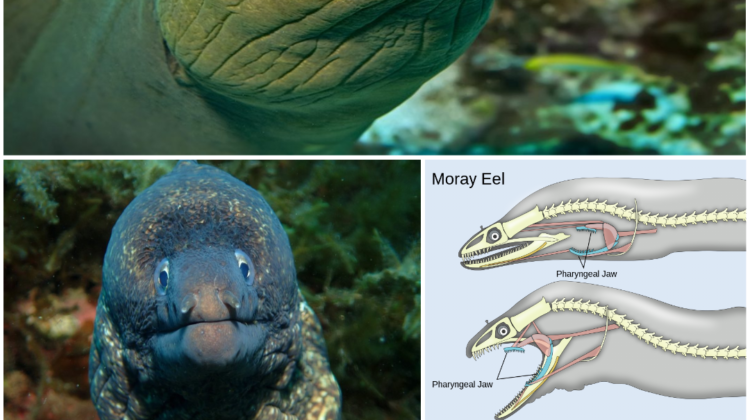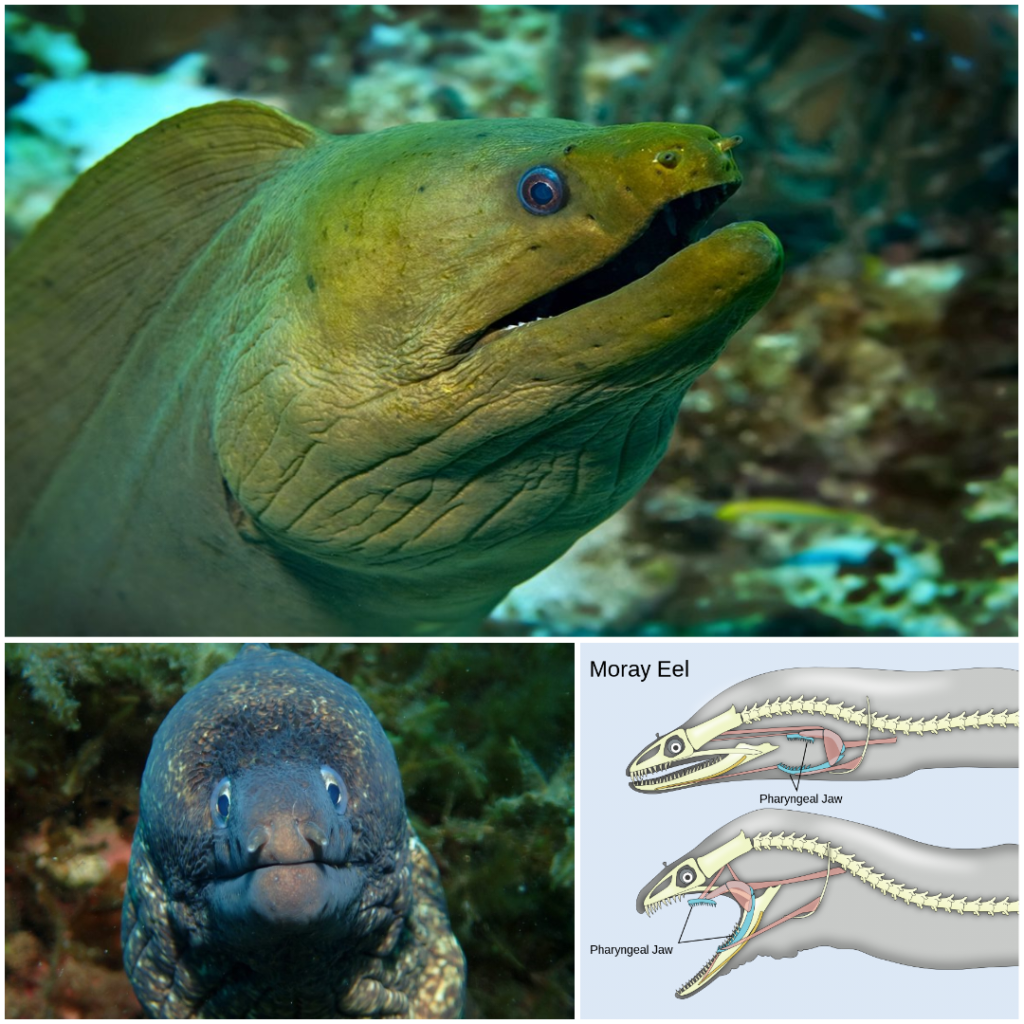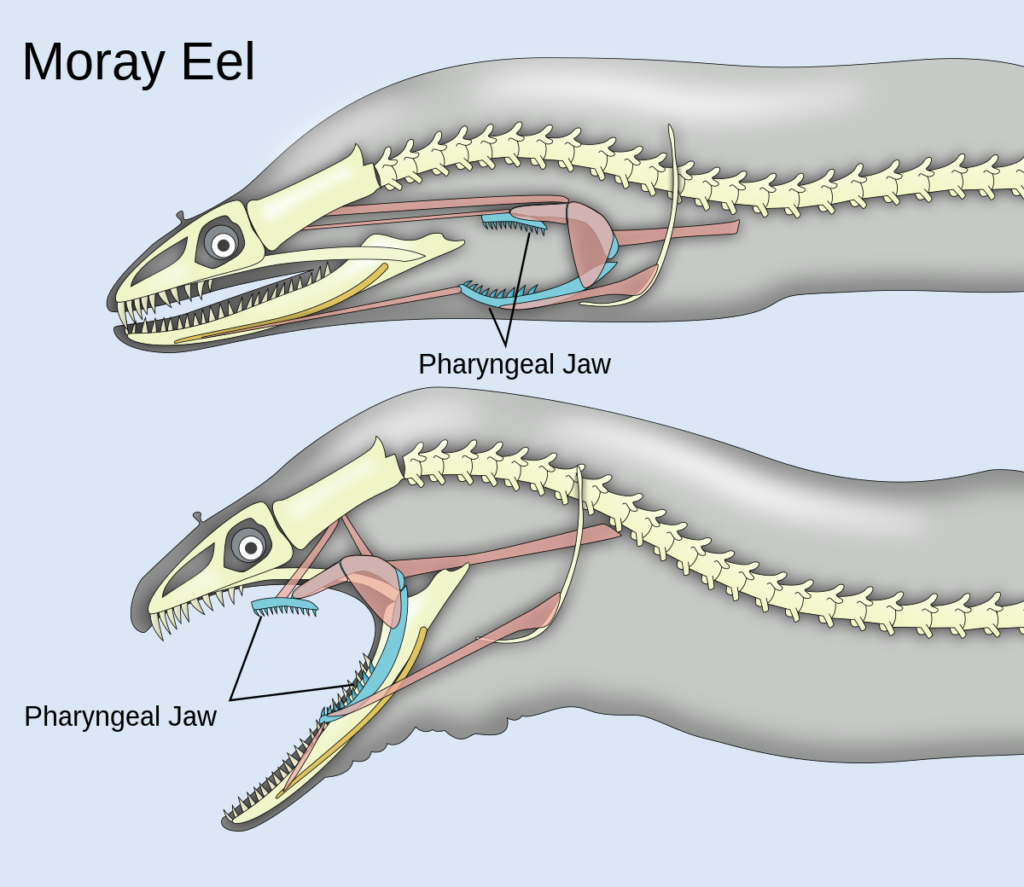
The enigmatic moray eel possesses a remarkable secret hidden within its anatomy: a second set of jaws known as the “pharyngeal jaws.” Unlike the primary jaws we observe on the exterior, these unique structures are positioned behind the eel’s skull. They possess an astonishing ability to rapidly extend forward, almost spanning the entire length of the eel’s skull. This intricate adaptation allows the eel to swiftly capture and transport prey to its esophagus for ingestion.
The pharyngeal jaws of the moray eel are a testament to the wonders of evolutionary innovation. While most species rely solely on their primary jaws for feeding, the eel takes advantage of this additional set of jaws, enabling a highly efficient and specialized hunting technique.

When a moray eel spots its prey, the pharyngeal jaws come into action. They rapidly shoot forward, seizing the unsuspecting prey with a vice-like grip. The swift and precise movement of the pharyngeal jaws ensures that the prey is securely captured, preventing escape.
Once captured, the pharyngeal jaws retract, pulling the prey further into the eel’s mouth. From there, the prey is smoothly transported through the eel’s esophagus, facilitating the process of swallowing. This unique mechanism allows the eel to consume prey larger than its primary jaws would typically accommodate.
The evolution of pharyngeal jaws in moray eels showcases nature’s ingenuity in adapting to specific ecological niches. By possessing this secondary set of jaws, the eel gains a distinct advantage in its predatory endeavors. It is worth noting that pharyngeal jaws are not exclusive to moray eels; they can also be found in certain fish species and provide similar benefits.

The discovery of the moray eel’s pharyngeal jaws has sparked curiosity among scientists and enthusiasts alike. It highlights the diverse and complex adaptations that have evolved in the animal kingdom, allowing organisms to thrive in their respective environments.
Understanding the intricacies of the eel’s double jaw system provides insight into the fascinating world of aquatic life. It serves as a reminder of the extraordinary adaptations that have evolved through millennia, enabling species to survive and thrive in their diverse habitats.
As we continue to unravel the mysteries of nature, the eel’s pharyngeal jaws stand as a testament to the endless wonders and surprises that await us. These remarkable structures shed light on the remarkable diversity and complexity of life on Earth, inspiring further exploration and appreciation for the intricacies of the natural world.

Leave a Reply